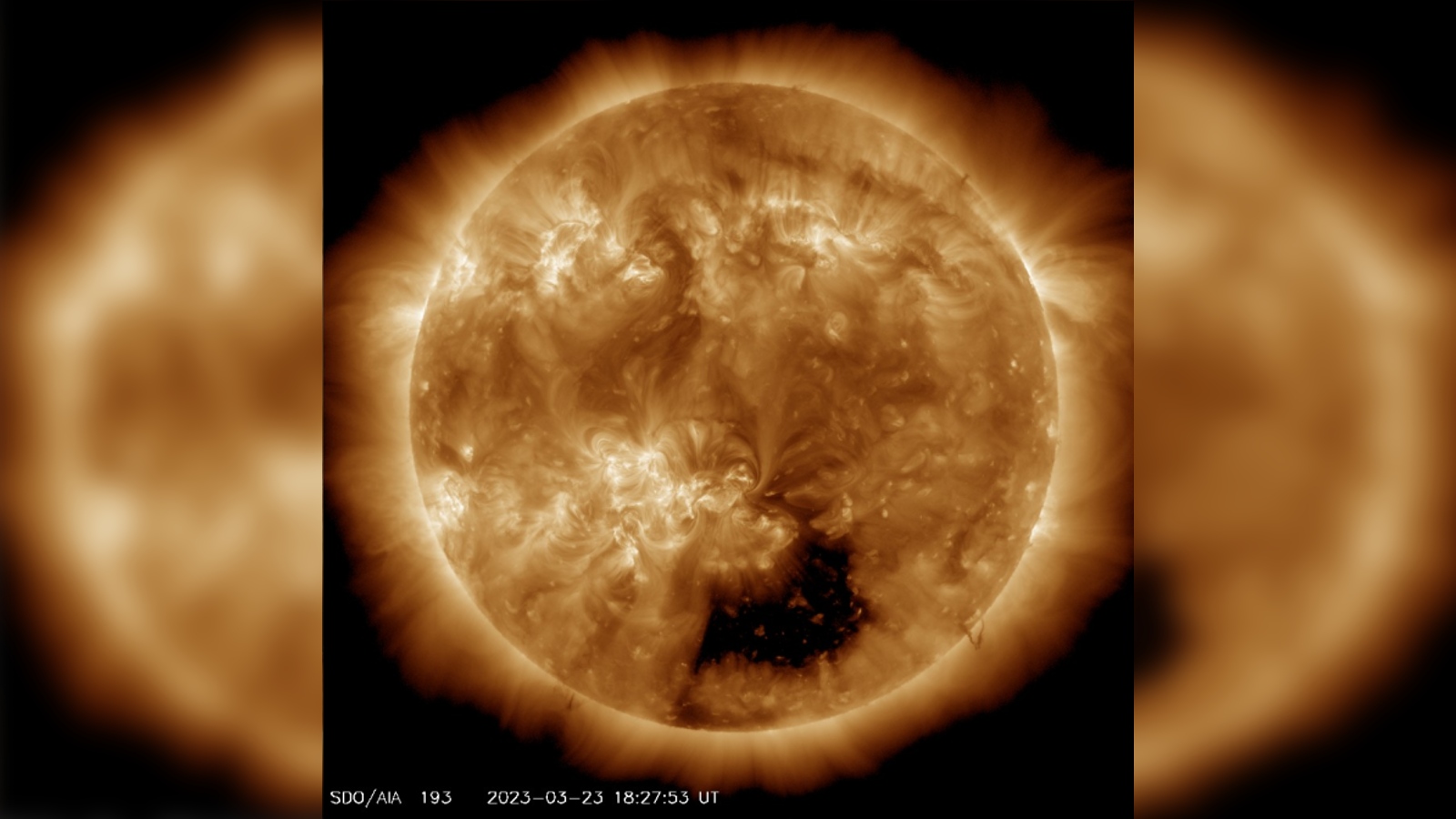
A massive "hole" larger than 20 Earths has opened in the sun's atmosphere and will soon batter our planet with charged solar particles. Luckily, this sun shower is harmless; the greatest impact will be dazzling auroras pushed to lower latitudes than usual Friday (March 24), according to the National Oceanic and Atmospheric Administration's (NOAA) Space Weather Prediction Center.
NASA astronomers spotted the hole Monday (March 20) when a massive dark patch appeared in the southern stretches of the sun's outer atmosphere, also called the corona. Known as coronal holes, these features are much cooler than the surrounding atmosphere, making them appear darker. The current hole is wide enough to fit 20 to 30 Earths within it, NASA researchers told Insider.
Through these coronal holes, high-speed solar winds made of electrically charged particles and magnetic fields gush out into space; the current hole is releasing winds exceeding 1.3 million mph (2.1 million km/h), according to NOAA.
When particularly strong gales of solar wind collide with Earth, they can compress the planet's magnetic shield and trigger events called geomagnetic storms, potentially causing radio blackouts, power outages and more pronounced auroras.
NOAA has classified the incoming particle barrage as a moderate G2-class geomagnetic storm, meaning the impacts on Earth will be largely unnoticeable. However, the storm could push the northern lights to much lower latitudes than usual, perhaps as low as New York and Idaho in North America, according to NOAA.
The effects of the storm will be greatest on Friday, NOAA added, with activity waning back to normal by Saturday (March 25).
Coronal holes are one of many solar weather features tied to the sun's roughly 11-year cycle of activity. As solar activity increases toward a period called the solar maximum, outbursts of high-energy solar flares and coronal mass ejections become more frequent and more powerful. The next solar maximum is predicted to begin in 2025, and activity has ramped up considerably in the past year.
Besides triggering auroras on Earth, solar weather can result in some absolutely breathtaking sights on the sun itself. In early March, astrophotographers snapped a 62,000-mile-tall (100,000 kilometers) waterfall of plasma bursting up and streaming back down toward the sun's surface. Earlier, in February, a NASA satellite captured an unprecedented "solar vortex" swirling like a cyclone around the sun's north pole for roughly eight hours.







